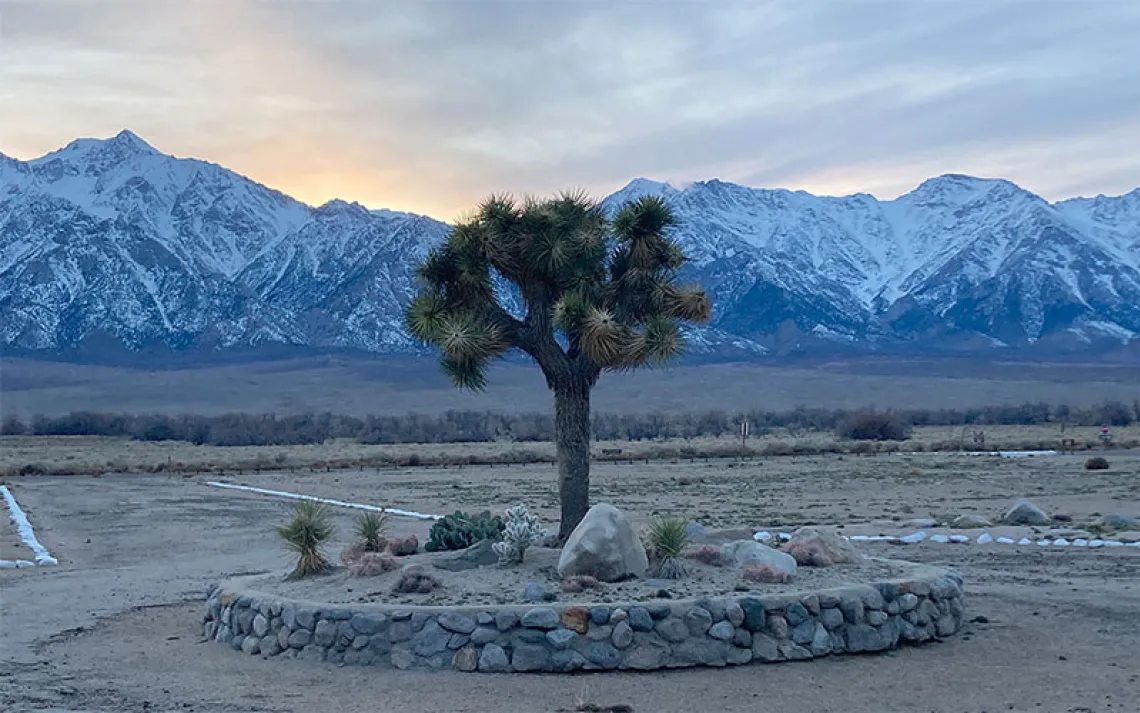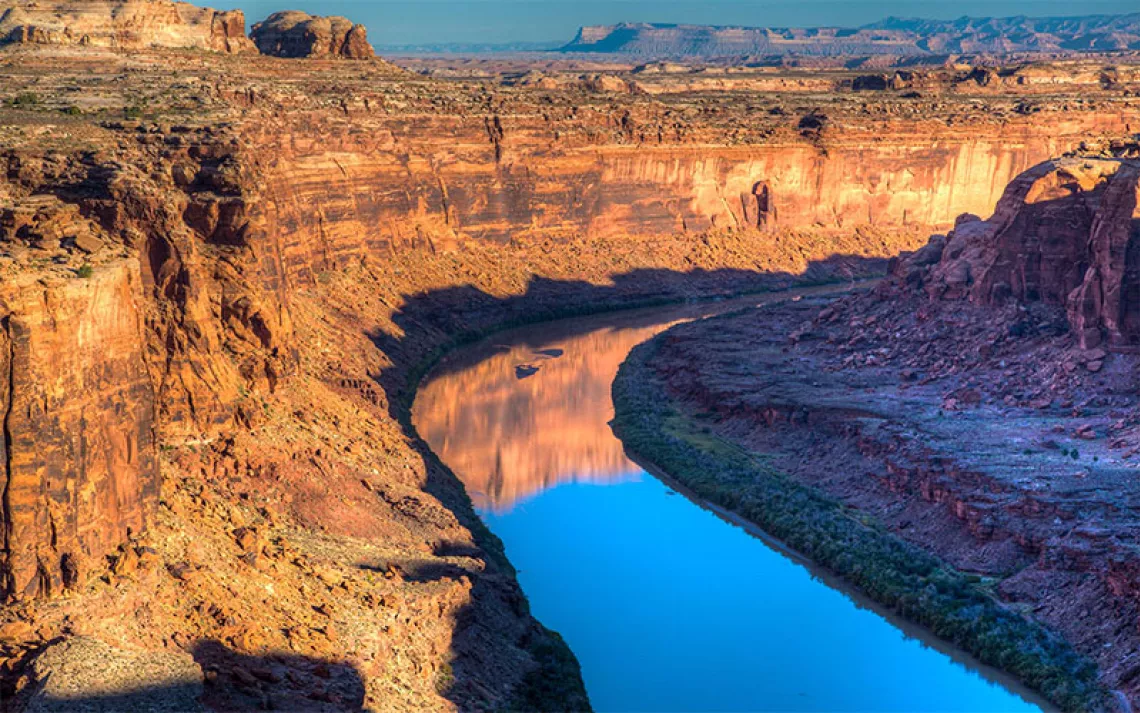House of Representatives Passes Sweeping Public Lands Bill
Conservationists cautiously optimistic about eventual Senate approval

The Colorado National Monument | Photo by Jon G. Fuller / VWPics via AP Images
Last week, on February 26, the House of Representatives passed a sweeping public lands package that, if signed into law, would designate almost 1.5 million acres of public land as wilderness, add 1,200 miles of rivers to the National Wild and Scenic Rivers System, and withdraw over 1 million acres from new mining claims. In addition, the bills expand national monuments and national recreation areas, create a new “historic landscape,” and fund the construction of new hiking trails on public lands. In total, the amount of land protected under the Protecting America’s Wilderness and Public Lands Act (PAW+) would be almost 3 million acres.
This level of land protection is especially appealing to conservation groups, who applauded the House’s approval of the legislation. “One of the reasons we like this package is because it’s a great response to climate change. Protecting more land like this bill [does] would give species and habitats the flexibility to adapt,” says Athan Manuel, the director of the Sierra Club's Lands Protection Program. “But there are a million reasons to like this package, whether you're looking at dealing with the challenges of climate change, at underserved communities who need access to parks, or at honoring our tribal partners by protecting places special to Indigenous peoples.”
The package of bills passed the House 227 to 200, mostly along party lines, with just eight Republicans voting “aye.” If passed by the Senate, the new law would also be an important step toward President Biden’s goal of protecting 30 percent of US lands and waters by 2030. The White House has released a statement in support of the legislation, which the bills’ sponsors say will protect wildlife habitat, help maintain air and water quality, store carbon, and safeguard communities against the effects of climate change.
"As a whole, the Protecting America’s Wilderness and Public Lands Act represents a commitment by this Congress to ensure that public lands are at the forefront of our work to deliver equitable climate solutions for the American people," said Representative Diana DeGette, a Democrat from Colorado and one of the bills' cosponsors, during a Rules Committee presentation before the full House vote took place. "By providing lasting protections for large, connected landscapes in Colorado, California, Washington, and Arizona, we really make sure to continue our strong public lands legacy and that we pass it on to future generations."
The most significant measures in the bills, by far, are the huge additions to the National Wilderness Preservation System. One of the single largest bills in the package is the Colorado Wilderness Act, sponsored by DeGette, who has introduced this bill in the House every legislative session since 1999. Her legislation would set aside approximately 660,000 acres of mostly Bureau of Land Management–administered area as wilderness. The bulk of the protected area would be new wilderness designations, but some existing wilderness areas, like Maroon Bells, would be expanded. “These are primarily rugged and scenic lower-to-mid-elevation areas and ecosystems that are currently underrepresented in Colorado’s wildernesses,” said John Sztukowski, conservation director at Wild Connections, in a statement. In addition, scientists have found that mountain ecosystems could serve as vital climate refugia for wildlife as climate change and development continue to alter ecosystems.
Another Colorado bill, the Colorado Outdoor Recreation and Economy Act, would protect 400,000 acres of public lands and withdraw 200,000 acres from new mining leases. Some of the new designations include 42,000 acres of wilderness along the Continental Divide and over 60,000 acres of wilderness areas in the San Juan Mountains. The bill would make Camp Hale, a World War II mountaineers’ training camp, the country's first “historic landscape.”
Two bills out of California would also protect a vast amount of wilderness. Representative Jared Huffman, a Northern California Democrat, is sponsoring the Northwest California Wilderness, Recreation, and Working Forests Act. The legislation would establish special management areas for restoration and conservation (with the goal of reducing forest fires), create the Condor National Scenic Trail, and protect approximately 260,000 acres of wilderness in and around Trinity and Six Rivers National Forests. The bill also includes a provision that would kickstart a program to help restore redwood forests in both the national and state parks. The Central Coast Heritage Protection Act, sponsored by Democratic representative Salud Ortiz Carbajal, would protect almost 250,000 acres as wilderness in the Los Padres National Forest and Carrizo Plain National Monument. Other companion legislation would add 109,000 acres to the San Gabriel National Monument and increase the size of the Santa Monica Mountains National Recreation Area by almost 200,000 acres. That national recreation area is less than two hours east of Los Angeles and would add valuable outdoor getaway space to one of the densest metropolitan areas in the country.
In Washington State, Representative Derek Kilmer’s Wild Olympics Wilderness and Wild and Scenic Rivers Act would establish 131,900 new acres of designated wilderness and add 457 miles of rivers to the National Wild and Scenic Rivers System. The bill has had broad support throughout Washington for years. On the Senate side, Patty Murray, a Washington Democrat, has introduced a companion version of the bill at least five times. Both Representative Kilmer and Senator Murray have worked with an array of groups, ranging from conservationists to loggers, to gain support for the bill. “Public lands are a really big deal in our region. They contribute to the fabric of who we are,” Representative Kilmer told Sierra. “I think there's a real appreciation for the fact that protecting public lands isn't just about saving these unforgettable places for future generations; it also means protecting high-quality jobs.”
Lastly, Representative Raúl Grijalva from Arizona is proposing a mining moratorium on 1 million acres surrounding the Grand Canyon. Representative Grijalva introduced a similar bill called the Grand Canyon Watersheds Protection Act in 2008, but it failed to gain traction. Then in 2012, then interior secretary Ken Salazar issued a 20-year moratorium on new mining, which the Trump administration took steps to reverse. Grijalva's new bill would make the moratorium permanent.
A suite of last-minute amendments were added to the previously written eight bills just before the final floor vote. Some of the additions include legislation that would fund the Outdoor Recreation Legacy Partnership Program; protect the Great Dismal Swamp, a pre–Civil War refuge for formerly enslaved people in Virginia and North Carolina, as a National Heritage Area; and direct federal agencies to outline ways to increase access to public land for urban communities.
Now that the package of bills has successfully passed the House, they’ll need to go through the Senate, where even some optimistic experts like Jenny Rowland-Shea, senior policy analyst for public lands at the Center for American Progress, say that anti–public lands senators could create roadblocks. There’s also the question of timing, cautions Rowland-Shea. With the COVID-relief bill and Senate confirmations still unfinished, the Senate has little room to consider other legislation.
A similar package of lands and water conservation legislation, with a nearly identical title, died in the Senate last year. Now, however, with Democrat Chuck Schumer replacing Republican Mitch McConnell as the majority leader and Democrats in control of the chamber, the odds do tilt in the bills' favor, says Rowland-Shea. Senator Michael Bennet, from Colorado, and Kyrsten Sinema, a key Democratic moderate from Arizona, have already introduced companion bills. And the Sierra Club is currently working with Senator Alex Padilla from California to introduce companion versions of the bills from his state, says Manuel. With so much momentum and a Democrat-controlled Senate, Manuel and other supporters of the package think the bill could have a hearing and be brought up for a vote by the end of the year.
According to Manuel, it’s just a matter of figuring out the best way forward. There are two ways the conservation legislation could pass. The first is through the normal floor process, where the bills would require 60 votes. Taking this route would be a high hurdle because it would require the votes of at least 10 Republicans, which is unlikely since even moderates like Mitt Romney of Utah and Alaska’s Lisa Murkowski may be difficult to convince. The second option would be to have a hearing in one of the committees, preferably the Energy and Natural Resources Committee, and then attach the public lands package to a larger, must-pass infrastructure, defense, or spending bill, which would have bipartisan support. Either way, the trifecta of Democratic control in the House, Senate, and White House has the bills' watchers feeling confident that the Protecting America’s Wilderness and Public Lands Act could become law.
“I think the chances are good in the Senate,” says Aaron Weiss, deputy director at the Center for Western Priorities. “We saw throughout even the Trump administration that big public lands bills were one of the few things that could make it through both chambers. “And I think that the chances of that only increase now with the Senate under Democratic control. I think the chances are very good.”
 The Magazine of The Sierra Club
The Magazine of The Sierra Club



